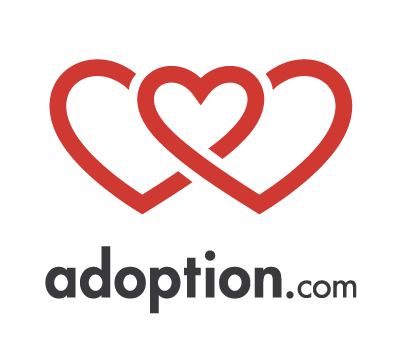Cultural Infusion: The Importance of Culture in Your Child’s Life
Most adoptive parents adopt to expand their family because they have love and a home to share with a child. When I started my adoption process, I remember not caring where my child came from because I was more interested in being a mom. It became very clear, very quickly that I was centered on the wrong person. Yes, I wanted to be a mom. Yes, I had the love and means to provide a child with a good life. However, I realized taking the focus off of me and what I needed and placing it on what my child would need would help her fully develop. Once I decided to adopt from Ethiopia, I researched how many Ethiopians lived in my area. I wanted to ensure she had a cultural community, even if she was thousands of miles from her homeland.
Often culture is minimized, overlooked, even forgotten. My daughter and I are of the same race, but she was born on another continent, so our cultures are very different. I remember vividly when I told people I was adopting internationally, they would say, “Well, when she gets here, she will be an American,” as if the adoption negated her entire culture. Or, there was some inherent superiority in becoming an American. Even within America, there are different cultures. I know how important my own culture is to me–the stories, the food, the traditions, etc. Inevitably, my daughter will absorb some of my culture, but I must not abandon her culture to replace it with my own. They are both equally important.
Like many parents, I am on a journey to ensure that I keep her culture alive and flourishing within her. Many adoptive parents and prospective adoptive parents don’t realize the importance of culture and how they should work to infuse culture into their child’s life.
What is Culture?
I spoke with the Founder & President of Culturally Fluent, Valarie Chavis, who defined culture as, “The way we do things. It is what connects people. Our culture gives us a sense of belonging. It is how we communicate, set expectations, and promote culture into the future.” She went on to explain that culture cannot be compartmentalized and broken down to a specific holiday or event. Culture is lived.
Culture and International Adoption
Most people clearly understand that internationally adopted children have a different culture because they come from a country outside of the United States. No one second-guesses that culture may be an important factor in their development. Families want resources to help navigate the cultural gap when they don’t live in the birth country and aren’t able to expose their child to the cultural nuances.
The childhood experiences of Tami Garcia, the founder and CEO of Mully Lingua, a language and cultural platform for kids ages 1-17, inspired her to develop a business in order to fill a gap that she discovered parents like herself had. Ms. Garcia, an adoptive mom to an Ethiopian child, explained that she started Mully Lingua because of her own childhood experiences. As a child of Dominican and Jamaican heritage, she felt disconnected from her culture. “I was different and I didn’t fit in and vowed I would do things differently when I became a mom.” The word that stood out when speaking with Ms. Garcia was “proud”. She mentioned she wanted her daughter to be proud and connected to her heritage and proud of the family she is being raised in. On her quest to find something that could help connect her daughter to her Ethiopian culture and gain an appreciation for other heritages, she couldn’t find anything that met her expectations. It was so important to have something available that she knew would benefit her daughter and other families, so she decided to create it herself.
Language is often the connecting thread between a child and their birth country that may unravel or become completely severed over time. In many cases children adopted at a young age never acquire the language of their land. Many parents believe if they reintroduce their child to their original language, then that will be sufficient. Ms. Garcia debunked this myth: “Language is incomplete without cultural context. You need to build a community.” Mully Lingua has built that community on a grassroots level with cultural ambassadors in 13 countries. These cultural ambassadors create the community and share their stories and history that fill the culture gap for children and parents who attend the virtual classes.
Culture and Transracial Adoption
It is easy to minimize culture down to someone speaking the language of their homeland, but culture is deeper and broader than just language. In many adoptive families, there are no language barriers or different countries of origin. Parents of transracially adopted children have a different cultural learning curve. I’ve heard people say, “Cultural differences aren’t a big deal since my children and I are from the same country.” “The only difference is race. We are all just humans.” Remember, human does not mean homogenous. Often, cultural differences are minimized because adoption primarily focuses on care for the child and never fully addresses culture. It is imperative that both are the focus.
Many times, adoption is the first and only significant experience a parent has had with someone outside of their own race. According to Ms. Chavis, many adoptive or prospective adoptive parents only have intracultural relationships, meaning they only socialize and have significant relationships with individuals within their own cultural group. When you don’t have genuine and significant relationships across cultures, you are inevitably either distant or avoiding the opportunity to build those relationships. Unknowingly, false narratives about other cultures may form due to the lack of outside connection.
During my conversation with Ms. Chavis, she mentioned that parents who have transracially adopted must be willing to stretch themselves and step outside of their intracultural communication and experiences. Infusing your child with their culture requires heavy lifting on behalf of the parents. First, embrace your child’s culture and understand that their culture must be important to you and them. It is crucial for your child to see that you value their culture and the people in it. Value is more than reading about and eating the food from a country. Value includes how you think about the culture, which may require you to have a mind shift. Ultimately, as a parent, you may have to become uncomfortable and engage with people within your child’s culture to develop genuine relationships. Mind shifts occur when people put in the work to get to know others outside of their own cultural circle.
You will be one of your child’s primary teachers but first, you must educate yourself about your child’s culture and lead by example. How you move through the world is an example for them. What you value and who you value directly correlates with how your child sees themselves and how they value their culture. A parental self-assessment and deep self-reflection are key steps for adoptive parents. One insightful question posed by Ms. Chavis that adoptive parents must ask themselves is, “Do you admire the culture that created your child?”
Build a Community
The shift from intracultural to intercultural interactions is for the benefit of your child. It takes a village to raise a child is an African proverb that is extremely relevant. When you do not share the same culture as your child, it is important to seek out people who do. As mentioned previously, once you start building those authentic relationships, a community connection begins to form. Although you may be your child’s first teacher, there are cultural questions and lived experiences you will not be able to answer or even relate to. The community is necessary for your child’s development.
Although your child may not have been formally introduced to people in their cultural community, they are definitely a part of a community. I see it every time my daughter meets an Ethiopian adult. They greet her with an indescribable joy-filled welcome. By opening yourself up to different people, different experiences, different points of view, and different ways of life within your child’s culture, you are gathering the building blocks of a cultural community for your child. As your child meets and experiences people from their culture, it increases their village. They begin to understand and value the ways of their culture. When these cross-cultural relationships flourish, you and your child benefit from the community.
Cultures Come Together
All cultures bring something distinct and beautiful to the table, but we must take the time to recognize and appreciate them. Attending a cultural festival once a year or eating certain food on a particular holiday is not how we fully appreciate a child’s culture. Culture is a constant. If your child is fond of their country’s music, make sure it is incorporated in your normal playlist with all the other music your family listens to. Ms. Chavis gave a perfect example: In her home, Ethiopian food is just another element of the meal. A pan of mac and cheese may be next to an Ethiopian dish. It is a perfect illustration that all these cultural elements can come together and that each holds an equal standing. It is a strong depiction of how cross-cultural adoption should work. All cultures are equally important and should be treated as such.
Why Is Culture important?
As parents, our job is to develop the entire child. Sometimes that includes re-capturing the things that were lost. Culture helps a child understand who they are. One of the triumphs of parenting is raising a child to flourish in the world beyond home base. When asked why culture was so important to infuse into her daughter’s life, Ms. Garcia stated,” I want my child to be open and accepting of who she is by birth, by raising and by experience. All of these things are who she is.”
It is important that adoptive parents nurture the whole child, including their cultural needs and ensure it is not diminished, considered insignificant, or an afterthought. Knowing one’s culture creates a sense of self that flourishes into self-love. Simply stated by Ms. Chavis, “Culture is not optional. Culture is a norm and is necessary.” Ultimately, she says, “Culture connects the child to themselves.”
The bottom line is that culture is more than food and festivals. It is deeper and richer than one-off experiences. The magnitude of culture in a child’s life is immeasurable. Culture is lived and it needs to be a part of their life. Some parents must move beyond what they know and expand–talk to people who are part of your child’s culture and truly get to know them. Often, people are uncomfortable engaging with people that don’t look like them; throw your fears aside and join your child in their cultural interactions and make genuine connections. Infusing culture is about focusing on the child and what they need. To truly value your child’s culture, you must be there every step of the way. Culture is not inconsequential. When your child has knowledge of their culture, self-love and pride grow.
Adoption is like a scale; there are ups and downs and gains and losses. A gain of a family may result in the loss of language, norms, history, etc. As an adoptive parents, one of our responsibilities is to mitigate losses as much as we can and balance the scales. It is important to recognize how important a child’s culture is and determine ways to ensure culture is still an integral part of their life. In the words of the great poet Maya Angelou, “You can’t really know where you are going until you know where you have been.”
Considering adoption? Let us help you on your journey to creating your forever family. Visit Adoption.org or call 1-800-ADOPT-98.






